Table of Contents
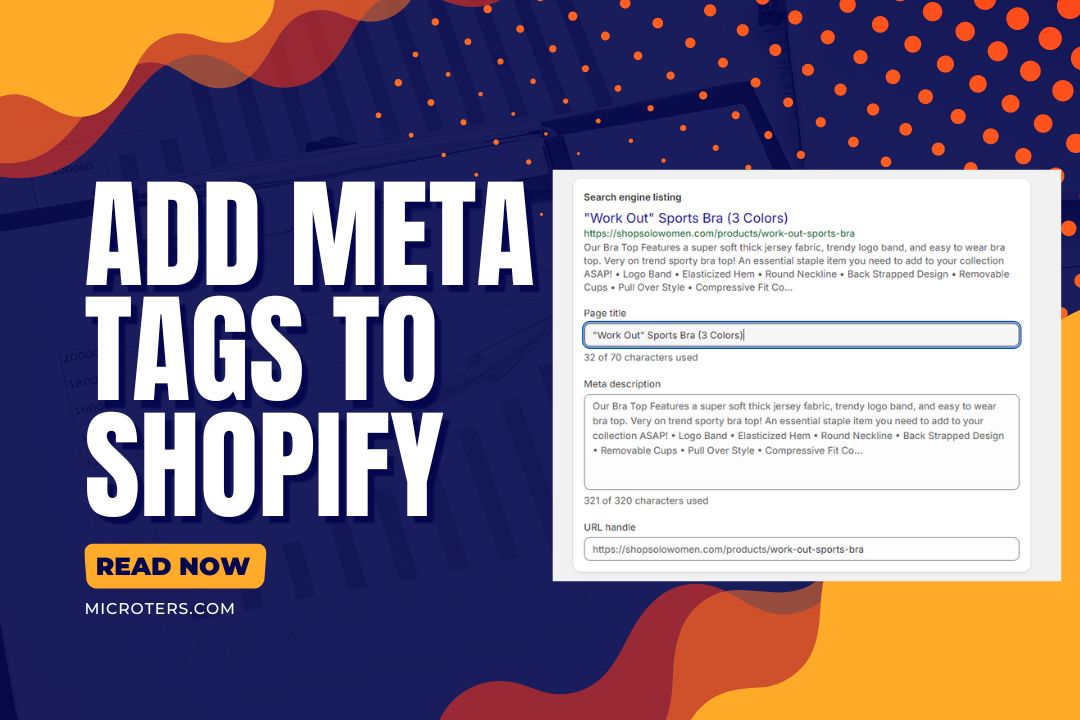
There are millions of Shopify stores and billions of products from them. So, how do you stand out in such a heavily competitive e-commerce platform to thrive your business? The answer lies in increasing visibility in search engines and among customers, which you can do with proper meta tags.
You can add proper meta titles and meta tags to improve your search engine visibility with correct keywords quickly. Sadly, most Shopify owners don't know the ways to add meta tags in their stores. So, they keep asking, "How do I meta tags to my Shopify website? Also, what are the requirements and character limits for Shopify meta tags?
You can add meta tags to Shopify stores in different locations. For instance, you can add individual meta tags and titles for products and collections. Also, it's possible to include SEO-optimized meta tags for the home and general section tab. You might even include them for Facebook linked with Shopify stores.
Today, we will guide you with all these scopes to add meta titles and tags for the Shopify website. It will be a key to improving your shop's visibility and attracting customers to boost sales. So, are you ready for this journey?
Why Do You Need Meta Tags for Your Shopify Store?
Search engines use different HTML and source code to crawl websites to know about them. It helps the search engines to see the website and decide about its ranking.
Regarding this, meta tags are crucial elements of the HTML code of websites, including Shopify stores. It provides essential information about your web pages to search engines and social media platforms.
1. SEO Improvement
Meta tags play a significant role in optimizing Shopify stores for search engines. During crawling, search engines rely on these tags to understand the content and relevance of your Shopify store. So, when you arrange the meta tags with proper keywords, it improves your search engine rankings.
2. Enhanced Click-Through Rate (CTR)
A well-crafted meta tag, including a compelling meta title and description, is crucial to attract customers in the first place. It can entice users to click on websites and products when they find them in search results. Always remember that Google and other search engines will show the meta description of the product in their SERP.
So, people can read it and decide whether or not to visit your Shopify website, product, and collection list.
3. Social Media Sharing
These days, social media sharing and discussion are important for boosting the reach and sales of your Shopify products. Meta tags will largely control how your content appears when shared on social media platforms like Facebook, Twitter, and LinkedIn.
Therefore, you must define specific meta tags to ensure that your links are displayed attractively and informatively when shared. It will also make people curious about your Shopify store and product.
Tips to Write Good and SEO-Friendly Meta Tags for Shopify
It's not enough to know how to add meta tags to Shopify store only. You must create meta tags that are proper with accurate keywords and look awesome simultaneously. It's crucial since you only have the chance to play with 155 characters and still make the meta tag and title engaging and visible, too.
How Do I Add Meta Tags To My Shopify Website For Homepage Tab?
The homepage is the first place that visitors see when they visit your Shopify store. So, the meta tag for the Shopify store homepage should be clear, concise, and engaging to create a first impression. It’s required for search engine results and your potential customers.
Step 1: Log in to your store
First, without any brain drain, simply login to your Shopify admin dashboard. For this, you will need login credentials such as email and password. As you login, you can access the backend of your Shopify store's backend.
Step 2: Open Preference Section
Now, scroll down the left sidebar of your Shopify store to navigate to "Online Store." From there, select "Preference" at the below right in the left-hand menu. As you click on the "Preference" section, it will take you to another page containing meta tags and titles. It will allow you to customize your homepage.
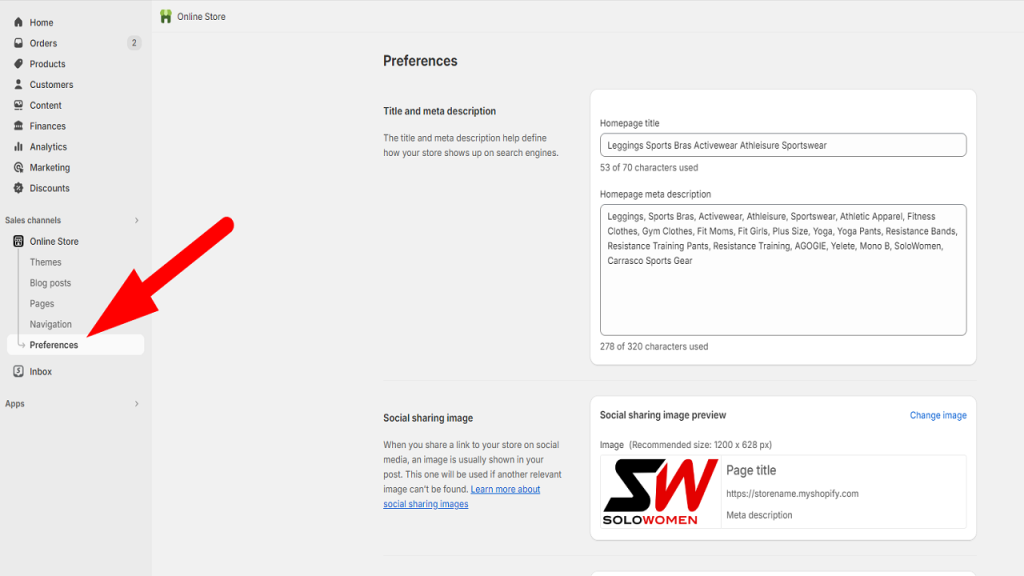
Step 3: Add meta tag and meta description
When you click and expand the “Preference” page, you can find all the customization options for your Shopify homepage. Right at the beginning, you will find the following two options:
- Homepage title
- Homepage meta description
Now, you can fill both the fields with the proper title and description. Be careful about the character limits as mentioned under the homepage title and meta description box. Or else, Shopify and Google will cut down your meta tags and it would look incomplete.
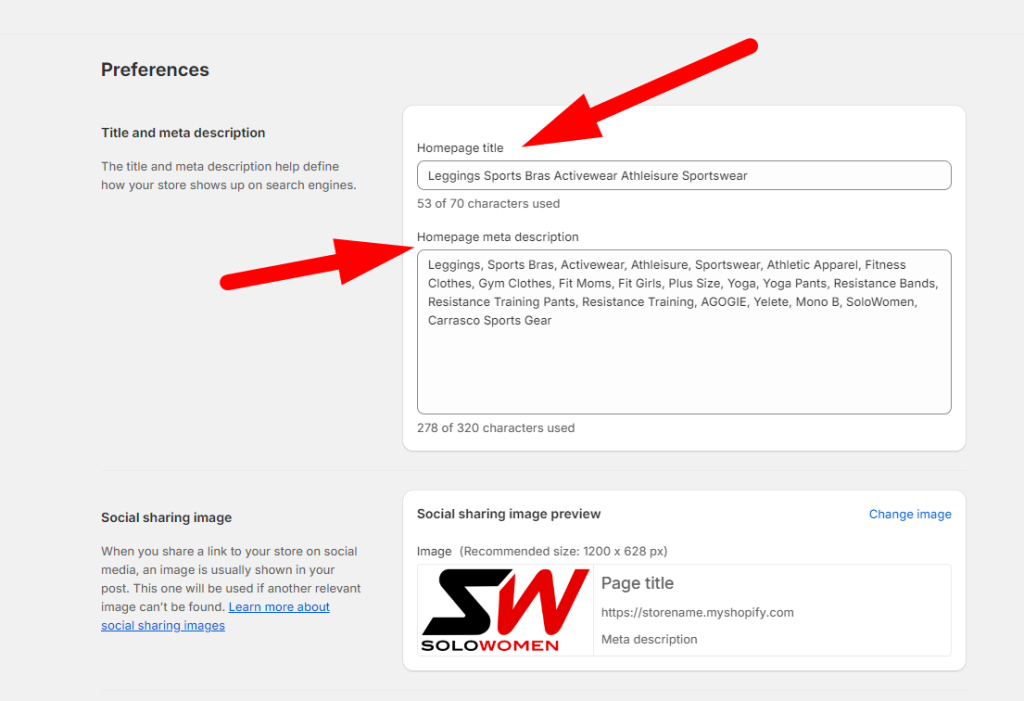
Alternative Method
You can also add and edit the meta tags and descriptions from the themes and customization section of your Shopify store. For this, click on the “Theme” section right under the “Online Store” section in the left sidebar.
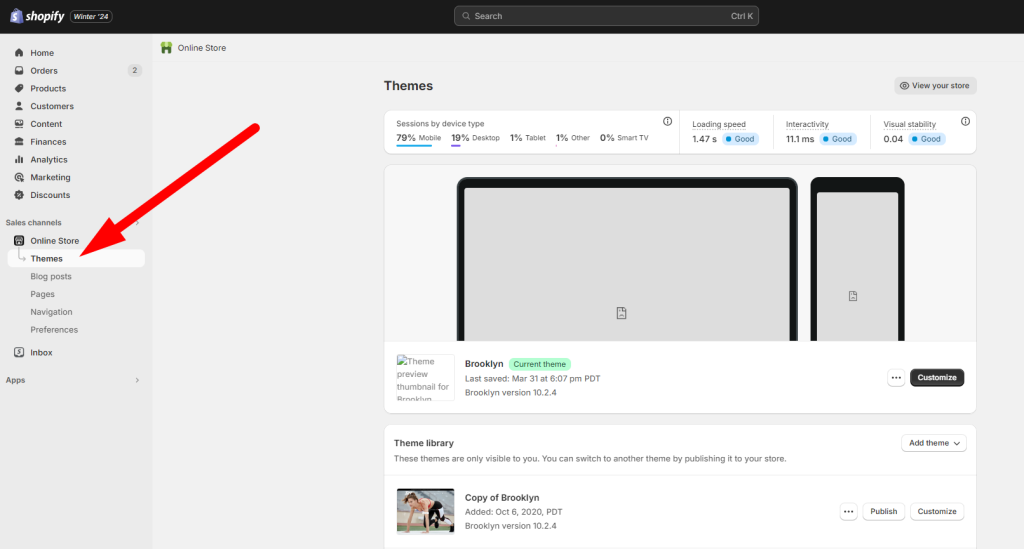
As you expand the section, you will see three dots, “…” right at the left side of the option “Customize.” You must click on it and expand it to see the different menus under it, as shown in the image below. From there, click on the "Edit Code" option.
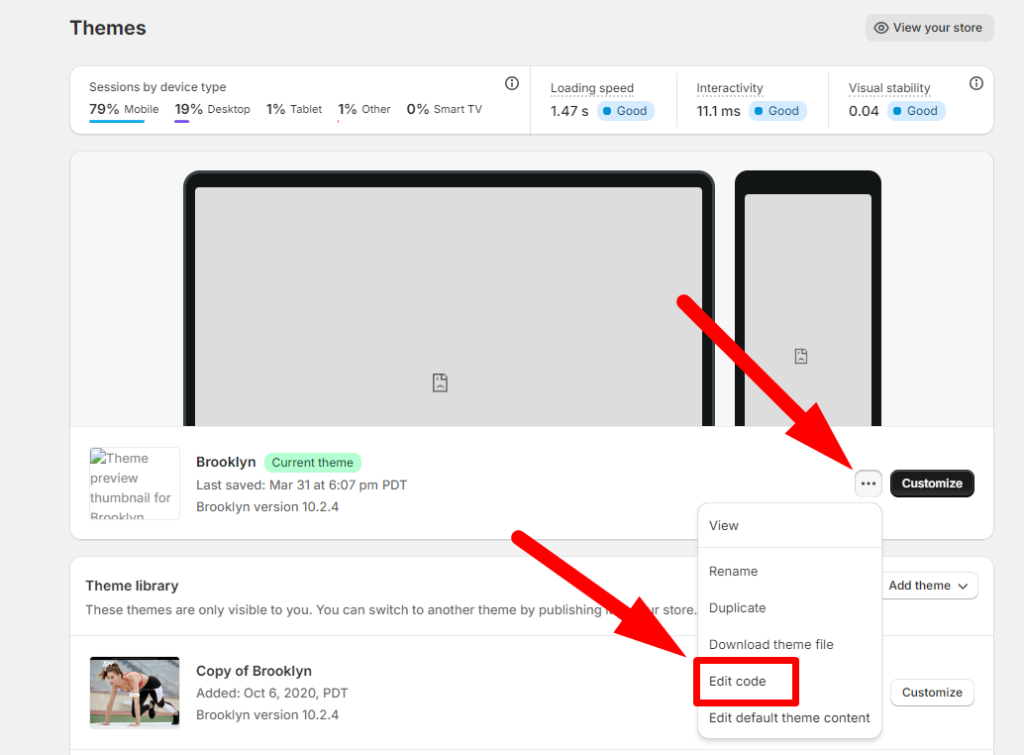
It will take you to the “theme.liquid" page that reveals the different CSS and HTML codes linked with the homepage of your Shopify store. Liquid theme uses Liquid 211 language as the template for the Shopify store.

Find the “head” section within the “theme.liquid” section to add the meta tags properly. For this, you can use syntax that Swifttype has approved for customization. After adding your meta tags, don't forget to save your changes or else you might need to start all over again.
How To Add Meta Tag On Your Shopify Products?
Besides adding meta tags and descriptions for your Shopify website, you must optimize each product in the store. And the best way to optimize the products for visibility and sales is to create attractive and unique meta tags from them.
Step 1: Go to the product you want to add meta tag
As is the case with any backend work of your Shopify store, first log in to the store. Thus, you can access your Shopify admin dashboard.
Click on "Products" from the sidebar menu. It will take you to your product listings in the store.
Scroll down to the specific product you want to add meta tags. You need to click on the product to go to its specific page for adding or editing the meta tags and descriptions.

Step 2: Add the meta title and description
When you go to the specific product page, you will immediately see the "Title" and "Description" parts for the product. There, in the two boxes, carefully enter the meta title and meta description. In this section, you can input the meta title and meta description with proper keywords that best describe the product.
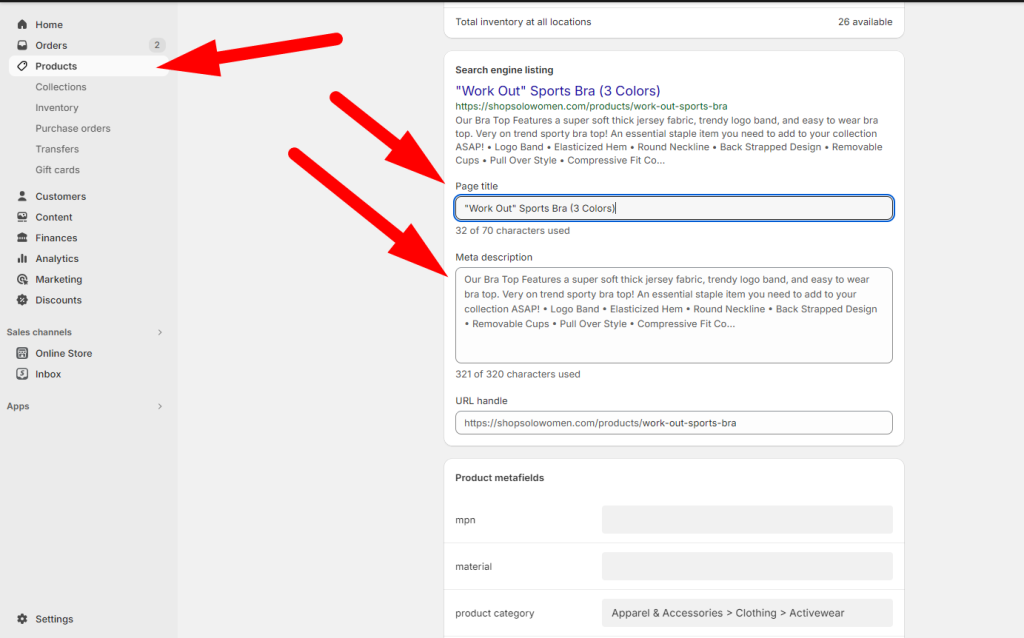
How to Add Meta Tag For Shopify Store Collection Tab?
The collections tab in Shopify is a unique facility that lets you add and organize similar products in the same section. When you create a collection tab, you can organize and display all the similar products within a tabbed interface. So customers can find all of the related products on the same page.
The good thing is you can add meta tags for the collection tab. It will apply to all the products you listed in the collection tab. It frees you from adding individual product descriptions and meta tags, which will save you time and effort. As you optimize the collection pages, it will organize and present the listed products effectively.
Step 1: Select Collections
After logging in to your Shopify store dashboard, click on the "Product" menu from the left sidebar. Then, navigate the "Products" section to find and click on "Collections."
Step 2: Add meta tags to the collection tab
Now, you can choose the collection you want to edit to add meta tags. If you don’t have any collections, you can create one from the collection tab. The tab will then show you the following options:
- Title
- Description
Now, optimize the title and description section to add proper meta tags. Or else, you might click, on the “Edit” menu for search engine listing to optimize the meta tag, description, and URL under the submenu. It gives you more customization options with ease.
How To Add Meta Tags To Shopify General Pages Tab?
The general page of your Shopify store will contain the "About Us" or "Contact Us" page. You can add meta titles and meta descriptions of them to improve their visibility in search results.
- In your Shopify admin dashboard, go to "Online Store" and then select "Pages" to see a list of your website's general pages. If you haven't created any page yet, you can click on the "Add Page" section, as shown in the image below.
Now, click on the page you want to add meta tags to. It could be your "About Us" page or any other general page.
- Just as with other sections, scroll down until you find the "Search engine listing preview" section. Click and expand the “Edit Website SEO” section to expand the menu.
- There, add the meta title and meta description that accurately represent the content of the general page. You can also edit the URL for this page to make it more unique.
How Do You Add a Facebook Meta Tag for Shopify?
Facebook meta tag creation is crucial for improving social media sharing and visibility. You'll need to edit your theme's code to add Facebook Open Graph meta tags to your
You must be careful while editing the codes. If you're not comfortable with coding, consider seeking assistance from a developer.
Frequently Asked Questions
Do you need to add meta tags to every product and page?
Yes, it's recommended to add meta tags to every product, collection, and important page on your Shopify store. It will optimize the product pages for search engines and social media sharing, increasing your online visibility and click-through rates.
What's the character limit for meta tags?
Meta titles should ideally be around 50-60 characters. Conversely, meta descriptions should be around 150-160 characters. If you go above the character limit for the search engine’s recommended character limit for meta tags, the description might remain incomplete.
Can you edit meta tags after publishing?
Yes, it’s possible to edit the meta tags of your Shopify website at any time. You can follow the steps we suggested above for each section of the Shopify store to update the meta tag and description.
Do meta tags affect SEO rankings?
Yes, well-optimized meta tags are crucial for proper and improved SEO rankings. Search engines will understand your content and its relevance to user queries through the meta tag and description. So, you can’t ignore it.
Conclusion
Meta tags for the Shopify website and products are as important as the products themselves. As you follow our steps for adding meta tags and descriptions, you should be successfully able to add and update them. However, we have only mentioned step-by-step guidelines for adding meta tags.
You must thoroughly research the right keywords for adding in the meta tags. Also, be creative and show your skills to make the meta tags and descriptions as creative as possible.




Leave a Reply